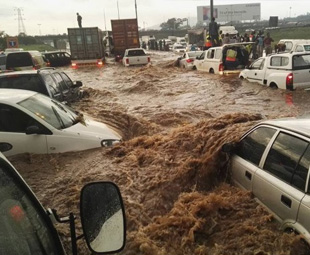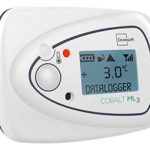Handling heavy rain and flooding

Heavy storms and rain in Gauteng and KwaZulu-Natal earlier this week caught many citizens by surprise, as well as causing widespread flood and hail damage. Advanced driver training company MasterDrive shares some tips for staying safe when caught in heavy downpours while on the road.
Driving in rain
– Give yourself more travel time so you do not have to rush in bad weather.
– Adjust your speed to suit the conditions. However, do not slow down unnecessarily, which could create a hazard.
– Do not use cruise control. Turn on your headlights.
– Leave more following room. Brake earlier and with more caution.
– Ensure there are no distractions in the vehicle before you leave.
– Driving recklessly increases chances of losing grip through hydroplaning.
– If you hydroplane, slowly lift your foot from the accelerator, but do not brake harshly or move your steering wheel violently.
Driving during floods
First and foremost, wherever possible avoid low-lying bridges, areas prone to flash floods, or large pools of water in the road. If you are unable to avoid one of these situations, this is the least that you should do:
Pools of water:
– Estimate the depth of the water. Avoid driving through water which comes to the middle of your tyres. Even if you avoid being swept away, you risk serious damage to your car.
– Most drivers underestimate the depth of a pool of water and risk driving through it, but roads that collect water are more vulnerable to collapse.
– If possible, drive in the middle of the road where the water is at its lowest.
– Pass one car at a time. Do not drive through water against oncoming vehicles.
Fast-flowing water:
– Never drive through fast-flowing water.
– It only takes 15 cm to touch the bottom of most cars, which will cause loss of control or stalling.
– Your car tyres will lift off the tar in 30 cm of water and you can lose control or get washed away.
– Even 4x4s can be washed away in 60 cm of water.
– Drive slowly and steadily through the water while in first or second gear, or the lowest gear in automatic vehicles.
– Once you are through the water, lightly touch your brakes a few times to dry them off.
– If your car stalls and you are not in danger of being swept away, do not restart the car. Rather get a mechanic to check that no water has made its way into the engine.
When caught in an unexpected flash flood:
– If you suddenly start losing grip it might be because the car is starting to float.
– Open the door to let in some of the water, which will weigh the car down and allow the tyres to grip the road again.
– If you are in danger of being swept away, abandon the vehicle if you have an opportunity to do so safely.
– Be overcautious; rather be safe than sorry.
Published by
Focus on Transport
focusmagsa




